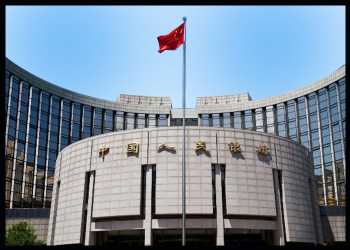The People’s Bank of China cut the reserve requirement ratio for banks by 25 basis points on Friday for the first time this year to support the nascent economic recovery and to ensure reasonable and sufficient liquidity in the banking system.
The RRR represents the amount of cash that banks must hold as reserves. The latest reduction in the ratio is applicable to all banks except those that have already implemented a 5 percent reserve ratio, the central bank said in a statement.
The new ratio is effective March 27. The average deposit reserve ratio of financial institutions after the latest cut is about 7.6 percent.
The previous change in the RRR was a quarter-point cut for all banks in December. The reduction was the fifth in this policy cycle.
The PBoC said the latest reduction would help to maintain appropriate money supply and credit at a stable pace that would to match the nominal economic growth rate.
The central bank also said it will avoid “flood irrigation”, a phrase that Chinese policymakers use to imply the process of flooding the system with excessive money supply.
In February, the PBoC retained its one-year loan prime rate at 3.65 percent and the five-year LPR, the benchmark for mortgage rates, was kept unchanged at 4.30 percent.
Economists said the latest cut in the RRR is unlikely to have any significant impact on the economy and liquidity conditions.
The latest reduction would provide some financial relief for China’s large and medium-sized banks and may also help to ease borrowing costs slightly, Capital Economics economist Julian Evans-Pritchard said.
The economist pointed out that the PBoC had guided banks to pass on much of the windfall from RRR cuts to borrowers through lower lending rates when it announced reductions in the past.
The absence of such window guidance this time implies that one motivation for the latest RRR cut is to take some pressure off of the banks, whose profitability has taken hit from the property downturn and wider economic weakness, Evans-Pritchard added.
Lower borrowing costs due to the latest reduction are likely to benefit real estate developers and local government bodies, ING economist Iris Pang said.
Another reason for the move may be to provide a cushion against any potential negative spillover from the recent global market turmoil due to the banking crisis in the US and Europe.
“If foreign investors need cash and there are sudden capital outflows from China, there is at least some immediate cushion,” Pang said.
“Surely in such an event, the PBoC would inject more liquidity into the market.”
The Chinese government has set a moderate growth target of around 5 percent for this year which would require no strong stimulus to achieve given the rebound the economy gained from the relaxation of the Covid pandemic restrictions.
Beijing had missed its growth target of ‘around 5.5 percent’ last year by a wide margin as the economy was strictly under pandemic related restrictions.
The second largest economy in the world grew only 3.0 percent in 2022 to mark the weakest expansion in decades.
Source: Read Full Article
